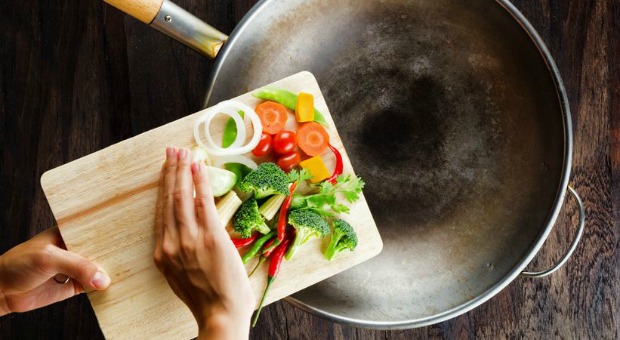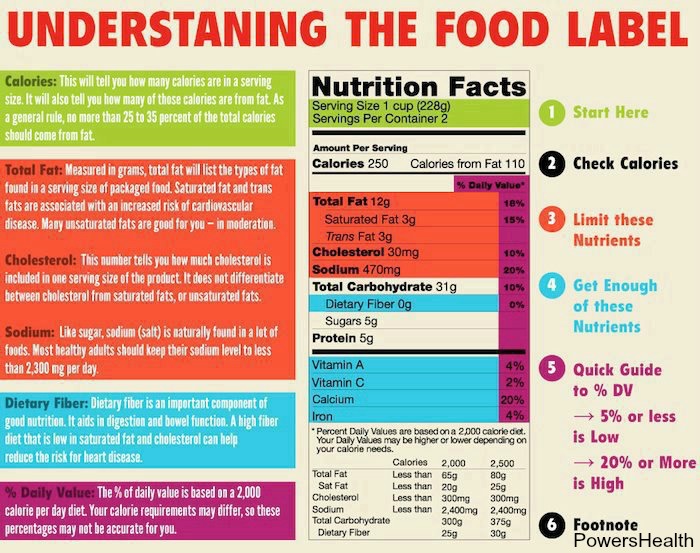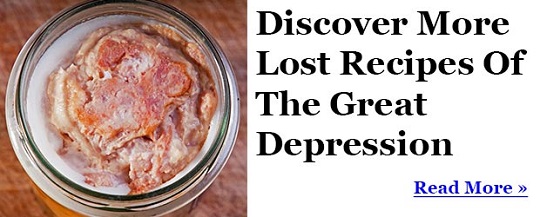It seems like almost every time I see a picture of somebody’s stockpile, it’s full of processed foods that were on sale.
And I just can’t help myself asking what kind of food bomb is hiding underneath…
Now, anybody that’s read any of my couponing articles knows that I love a good deal, but you won’t find a single box of HoHos or canned wienies in my stash. That’s because they’re garbage with zero nutritional value, and even worse. Can you guess in which way?
As a matter of fact, not only are they empty of nutrients, they’re also full of stuff that’s really bad for you. But, you may say in the case of snack cakes, sugar provides energy. It sure does. And all of the additives and preservatives that you’re eating alongside that processed sugar cause everything from migraines and sluggishness to cancer.
We stockpile food for a reason – so that we can have a ready supply of nutrient-dense food in case disaster strikes. What many of us don’t realize though is that just as food can nourish us, it can also kill us.
What’s the lesson here? Prepare your foods safely using healthy ingredients otherwise they will make you sick.
A jar of peaches that you canned yourself provides natural sugars that will provide better energy as well as fiber that will help your body process it optimally without the added garbage. Oh, and it’s natural energy – not the hyperactive side effect of many artificial colors.
Even if you can’t can your own, you can buy cans of fruit and veggies without added junk: I just picked up a can of Del Monte pineapple chunks and it has two ingredients: pineapples and pineapple juice. I can pronounce both of those and tell you exactly what they are. Oh, and it has zero fat or cholesterol and offers 17g of healthy carbs and 20% of your RDA of vitamin C.
Now, we can debate the health risks associated with the plastics used to line some cans, but surely nobody will argue that the snack cakes are better than the fruit.
My point is that most of us have limited space to stockpile foods that we will depend upon for survival, so use it wisely. 10 cans of fruit take up the same space as two boxes of snack cakes. It’s kind of a no-brainer. You can’t live on sweets and canned wienies for more than a few days without becoming sick. You can live on fruits and veggies indefinitely.
There are also ingredients that can sneak into foods that you grow and preserve yourself, so you need to watch out for those, too. Finally, you need to preserve your foods using safe methods in order to avoid botulism. We’re going to touch on all of these today.
Discover the ingenious recipes that helped our ancestors stay alive!
The Poison Hidden in Canned Foods
Even if you preserve most of your own food, there are likely still some products that you’ll buy commercially to supplement your stockpile.
That’s fine. Just read the labels. The easiest step that you can take to ensuring that you’re getting pure nutrients instead of chemicals that make you sick is to stop buying processed foods. Seriously – they offer so little nutrition that even if you get it for free, you’re getting what you pay for. Instead of tossing that can of spaghetti rings into your cart, add some fruits or veggies instead.
The best way to buy safe foods is to look at the label. If you can’t pronounce it, it’s likely linked to one disease or another. Shoot for foods that have as few ingredients as possible. Here are some ingredients to avoid:
- Artificial colors – linked to hyperactivity and headaches – it’s why you get that “sugar rush” after eating or drinking processed sugary foods.
- Sugar and High Fructose Corn Syrup – I’m not differentiating between the two. They’re both bad for you and, believe it or not, physically addictive. I’m not preaching and telling you that sugar’s evil and you should never eat it (though I guess in theory, you shouldn’t). I’m just saying everything in moderation. A piece of pie for dessert if you eat your veggies is one thing, but you shouldn’t eat it AS your dinner.
- Partially Hydrogenated Oils and Trans fats – both of these are bad for you. They’re not natural and they cause an increase in bad cholesterol and a decrease in good cholesterol. They’re also hard for your body to dissolve. Neither has any nutritional value. You’ll find these in most vegetable oils. When you’re stockpiling, go with healthier fats such as butter (yes, I said it!), olive oil, or coconut oil.
- MSG (Monosodium Glutamate) – this is often added to food to increase stability, add flavor, and extend shelf life. It’s also not well-tolerated by many people and cause allergic reactions such as headaches and swelling of the face. It can also make you tired.
- Sulphites – preservatives used to maintain color and extend shelf life. They can case many of the same reactions of MSG, including headaches, flushed/puffy faces or other anaphylactic reactions.
These are just a few of the bad guys that you should look for in your food. There are, of course, people who will debate both sides, especially on more contentious ingredients such as BTH and BTA. Just do your research and read labels. If in doubt, if you can’t pronounce it or don’t know what it is, don’t buy it.
Get in Control Preserving Your Own Food
Just like there are ingredients that you have to avoid when you’re buying food off the shelf, There are also things you have to watch out for when you’re growing your own food, or at least preserving fresh food that you bought from others.
You’re probably thinking about washing the produce and making sure your canning equipment is clean, right? Well, yeah, but that’s not all. The place you start here is at the beginning, when you plant the seed or feed the chickens or cows.
What goes into growing your food goes into your food. You want to be careful not to give your animals hormones, and if you have to give them antibiotics, you’ll have to throw away the milk until it clears their systems. Note I didn’t say NOT to give your cow antibiotics – personally I think it’s cruel to let them die of mastitis because I don’t want to eat “tainted” meat. That’s my opinion, thought.
Say NO to Hormones
I do believe that there’s no reason on the planet to give any of your livestock hormones. They’re already hardwired to grow big enough to eat and to make milk or eggs. Studies link all kinds of diseases and illnesses to hormones in meat.
Feed Your Livestock Right
Animals need vitamins and minerals just like we do. Your chickens will love you if you give them scratch – lettuce, melon rinds, garden scraps, grass clippings, etc. and it’ a good way to feed them healthy foods.
As long as it’s not coated in commercial pesticides and such, though! Cows and horses need quality grain and roughage that hasn’t been sprayed with chemical herbicides, insecticides, or fertilizers.
What they eat eventually transfers to what you eat.
Grow Your Garden Organically
There are many effective ways to grow your food without using chemical fertilizers, herbicides, and insecticides. You can use compost – both solid and manure –as fertilizer.
You can add Epsom salt to increase the magnesium content of the soil. Boiling water, salt water, and soap kill weeds and harmful insects. Neem oil, citrus oil, and eucalyptus oil, to name a few, all kill insects.
What you put on your plants is what you’ll eventually end up eating.
This is harder when you buy your food from local coops, etc. because you don’t really have any way of knowing for sure exactly how they grow the food. If you don’t trust the source, then wash and/or peel your produce before you process it.
I guess the lesson here is that you are what you eat, so eat healthily!
Be Paranoid about Food Safety
Now, onto other safety measures that will keep your stockpile ingredients safe and healthy.
When you’re canning, make sure that you always sterilize all of your equipment. If you’re canning low-acid foods such as meat, you have to pressure can it – if you don’t, there’s no way to know for sure that you’re reaching the temperatures, and holding them long enough, to kill foodborne pathogens like botulism.
If you are about to open a store-bought can of food and it’s bulging or damaged, toss it because it could be contaminated with botulism. By the same token, if your home-canned goods are cloudy, frothy, leaking, or make more than the standard little pop when the seal breaks, toss it. One lost jar of food – or even 20 lost jars – isn’t worth botulism.
Pay attention to appearance, smell, and texture. Those are ways that you can tell if your food is bad.
Finally, and this should be common sense, wash all of your food before you prepare it, and wash your hands, too. Cross contamination can cause a lot of problems and it’s too easy to avoid.
One other note – if you’re dehydrating food, make sure that you get as much of the moisture out as possible, and trim all of the fat from it that you can before you start drying it.
Dehydrated food is amazing, lightweight, and doesn’t take up nearly the space that canned foods do, so do it right.
Back in the days, our grandparents knew how to eat healthy and their eating habits were the key to a strong, healthy and long life.
Find how our forefathers handled their survival food, and steal their secrets for your own survival!
If you can think of other ways to keep your survival stockpile healthy, please feel free to share it with us in the comments section below.
This article has been written by Theresa Crouse for Survivopedia.









